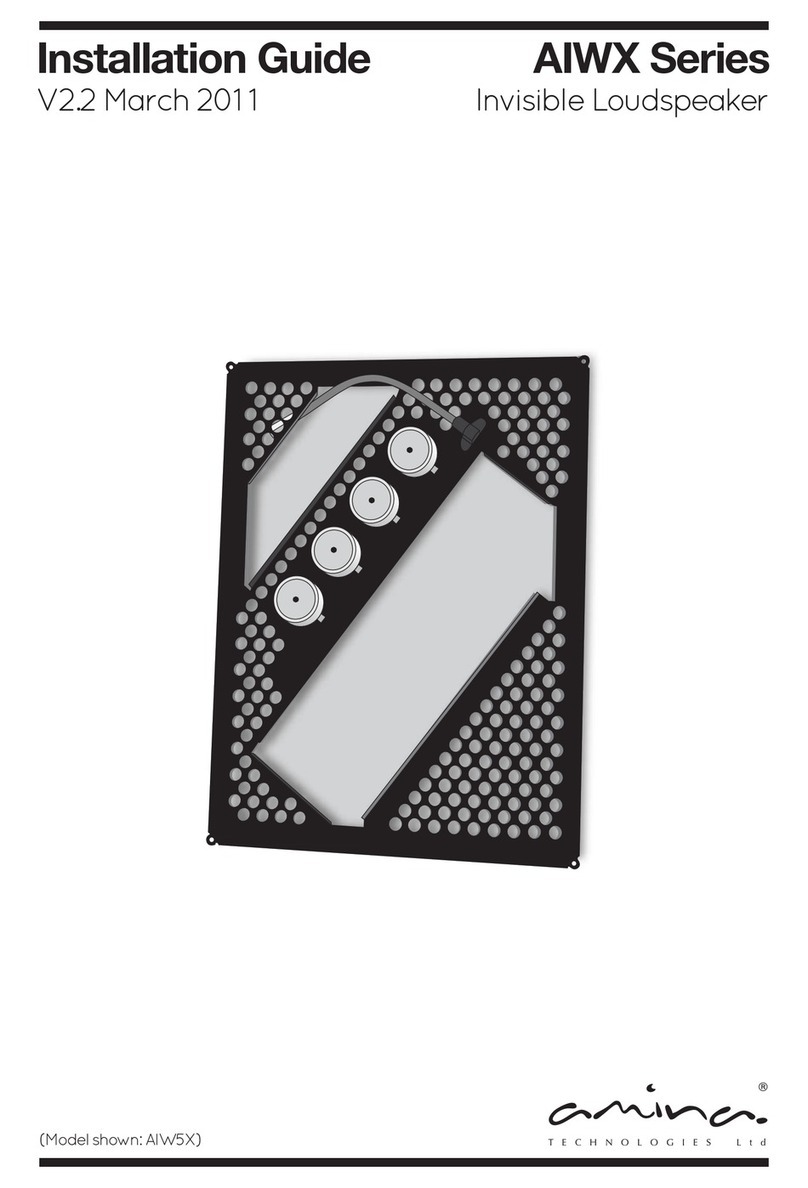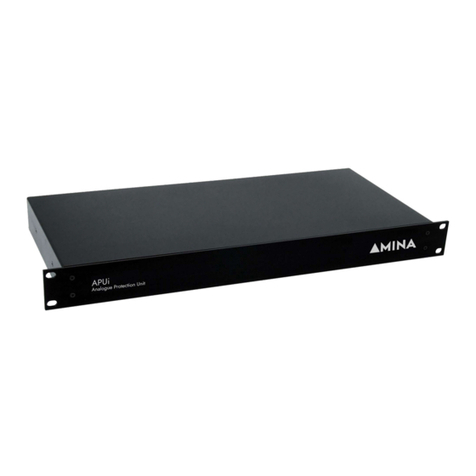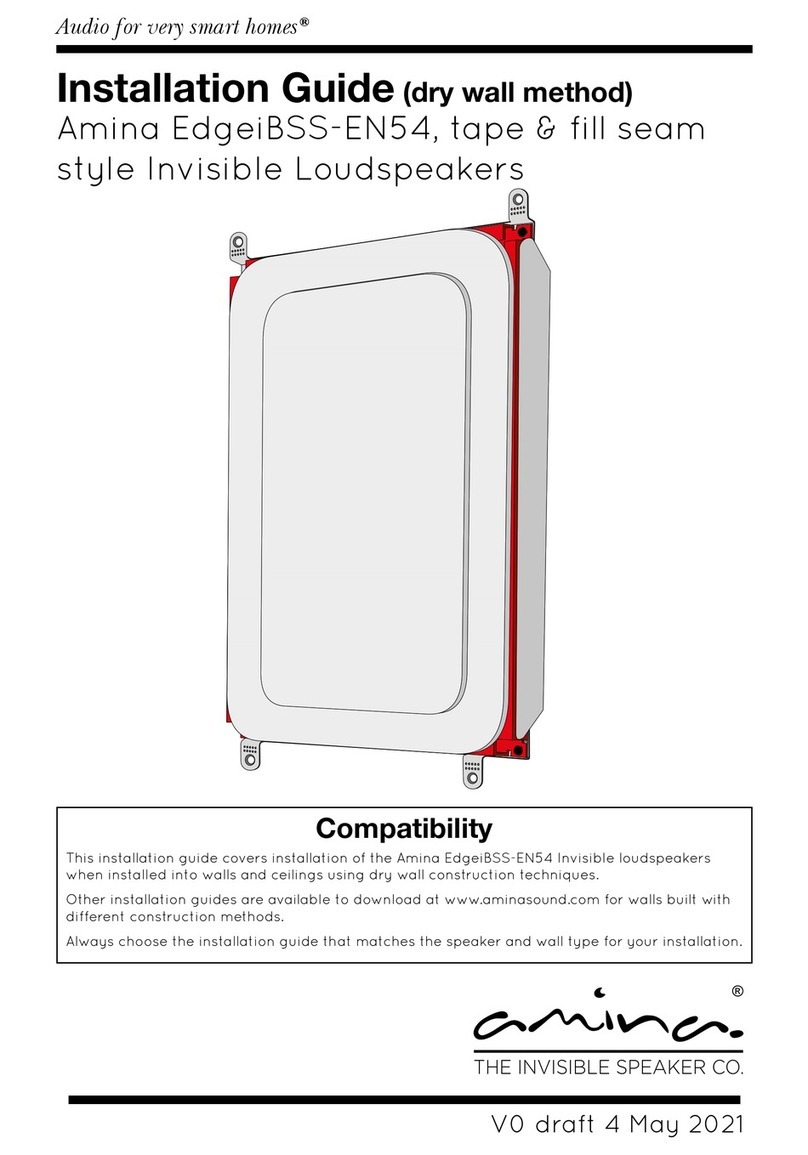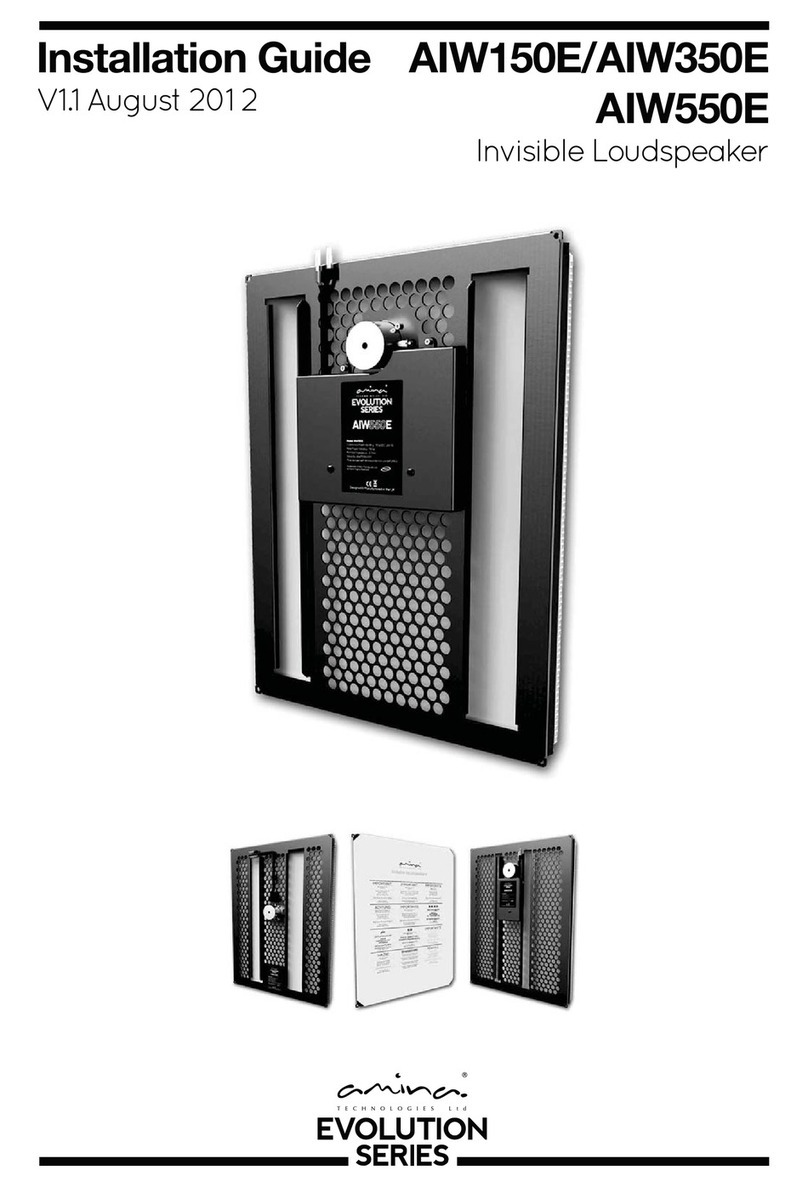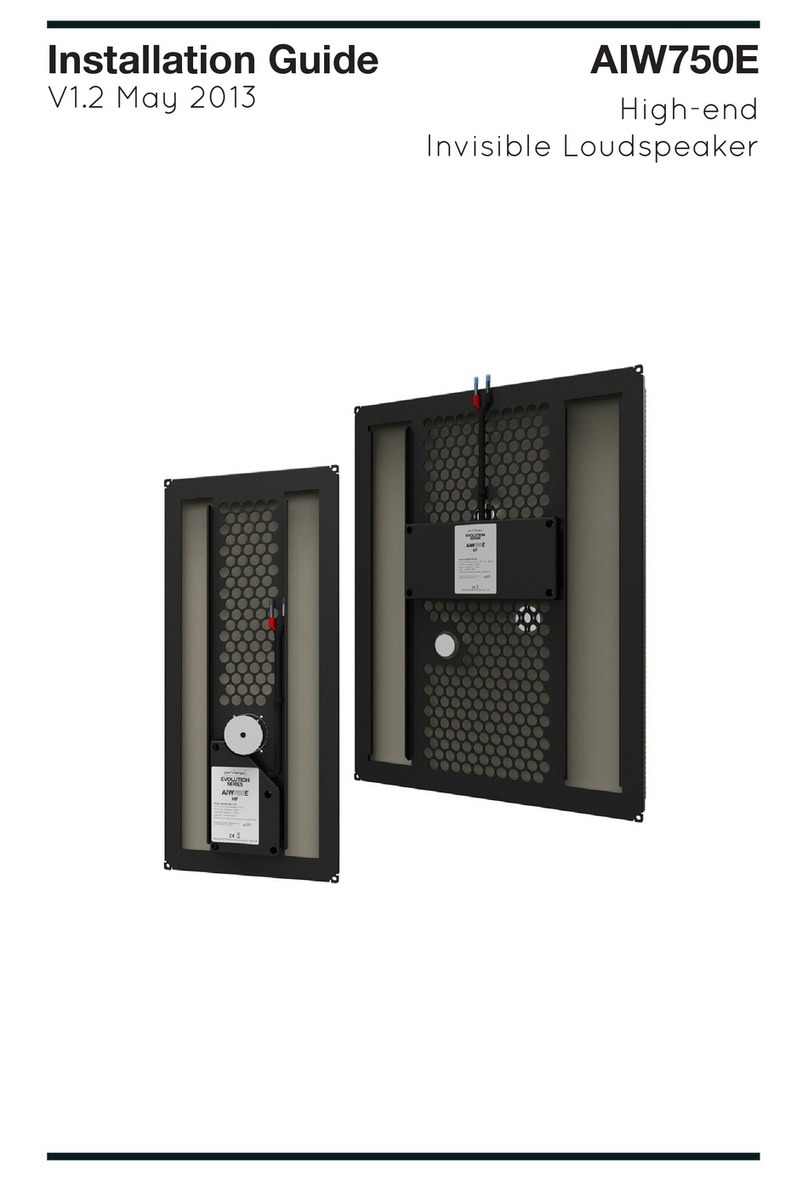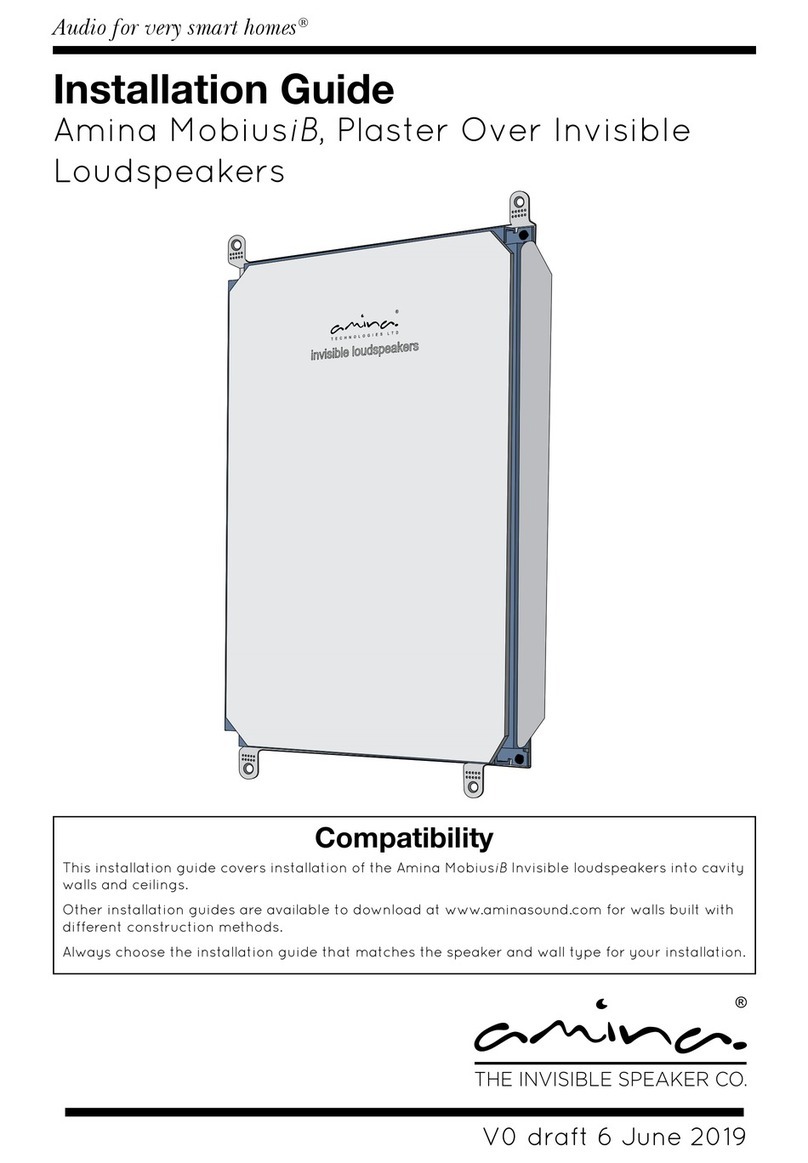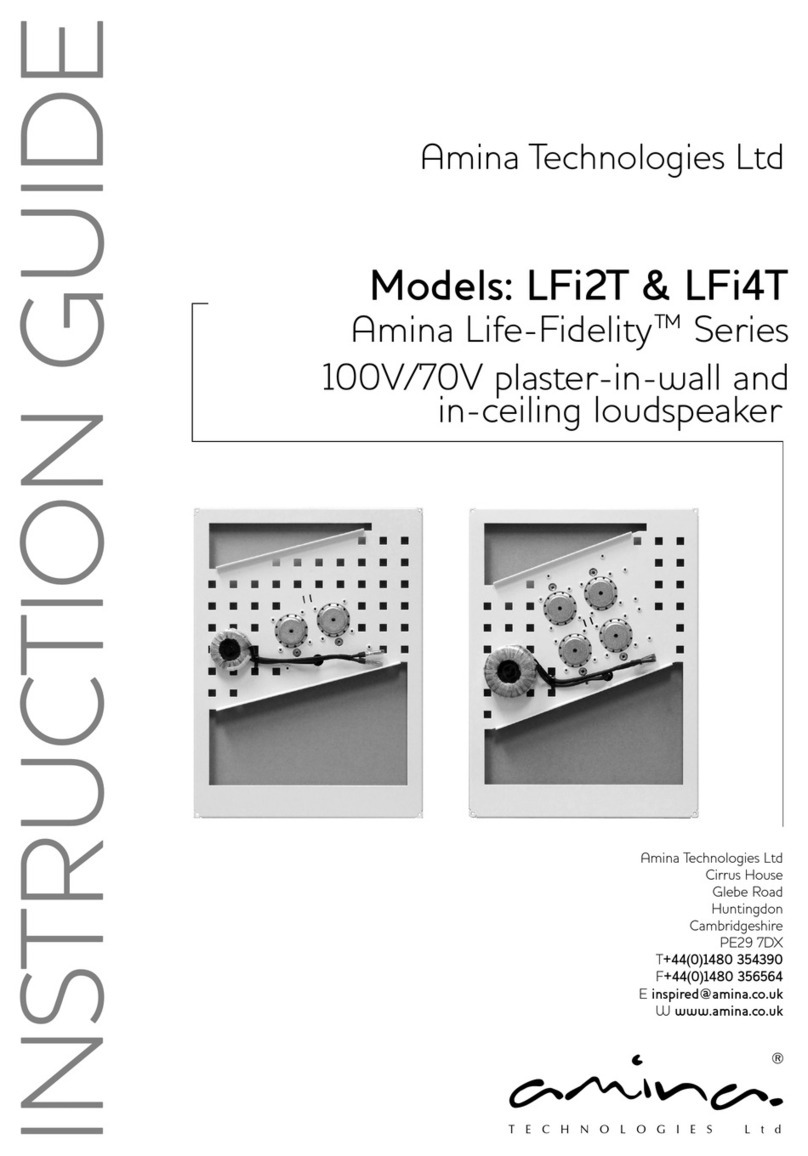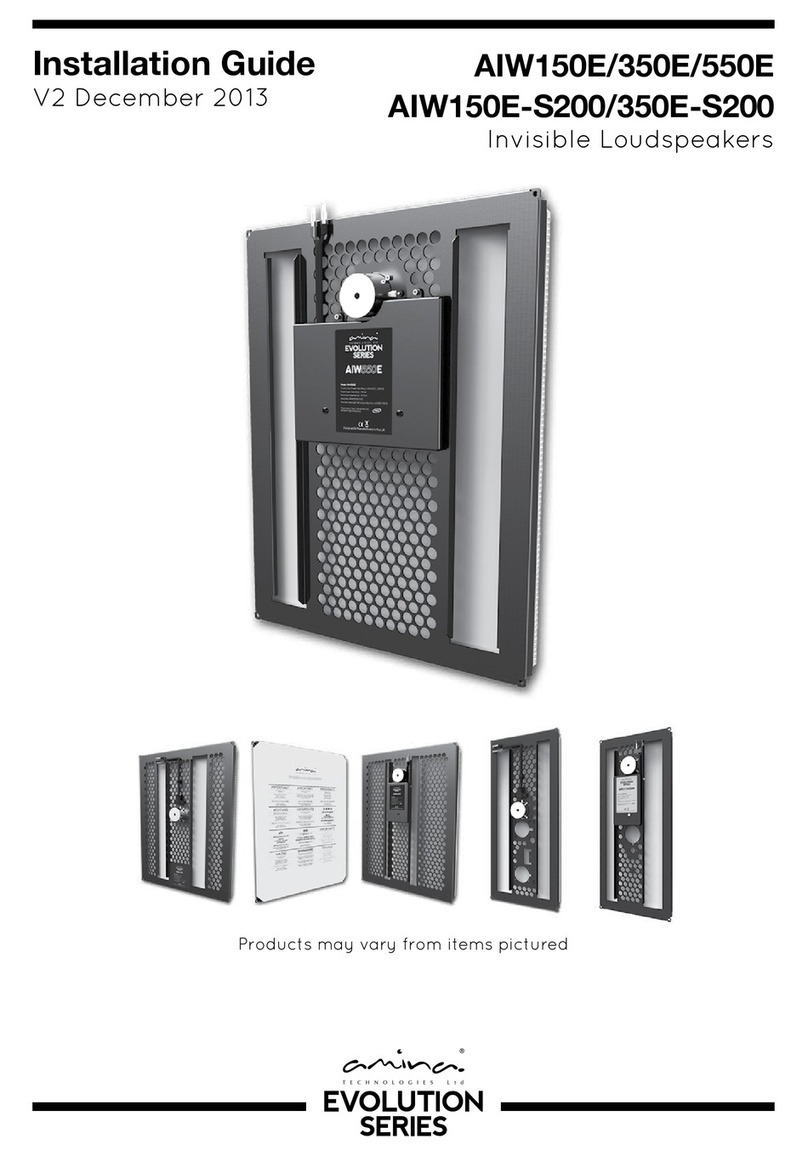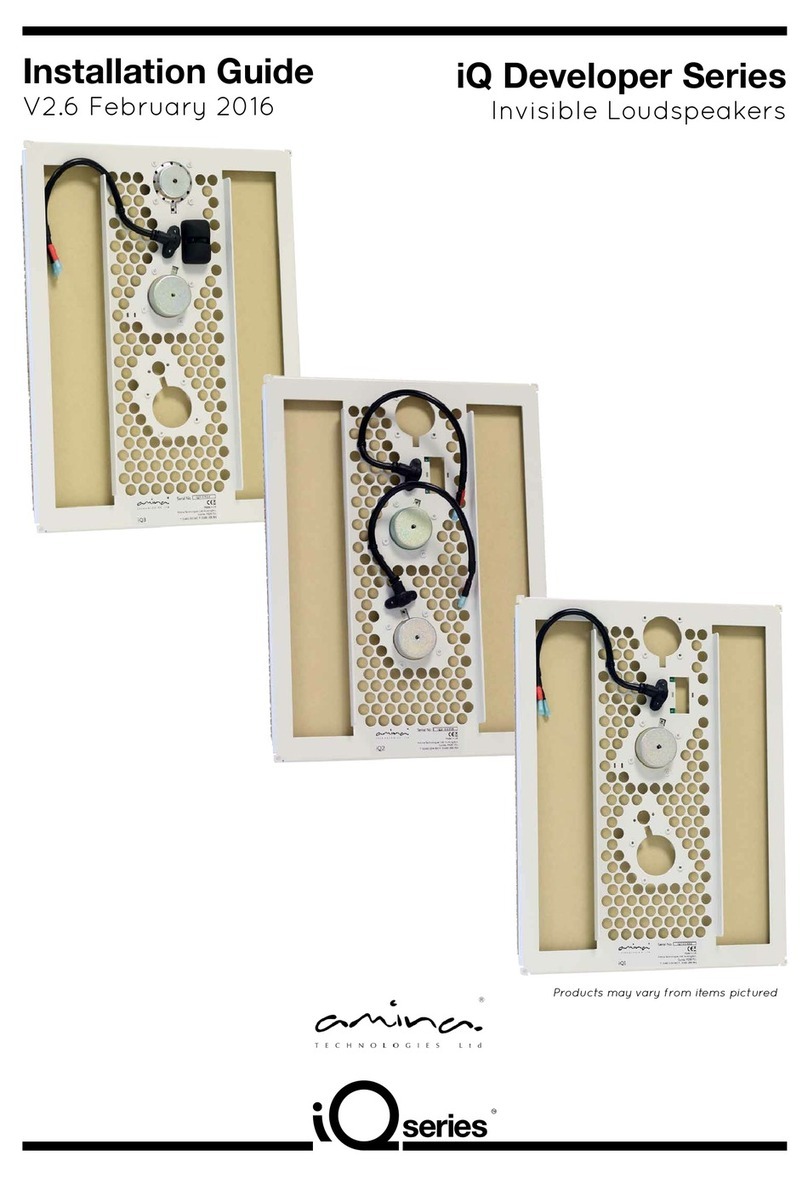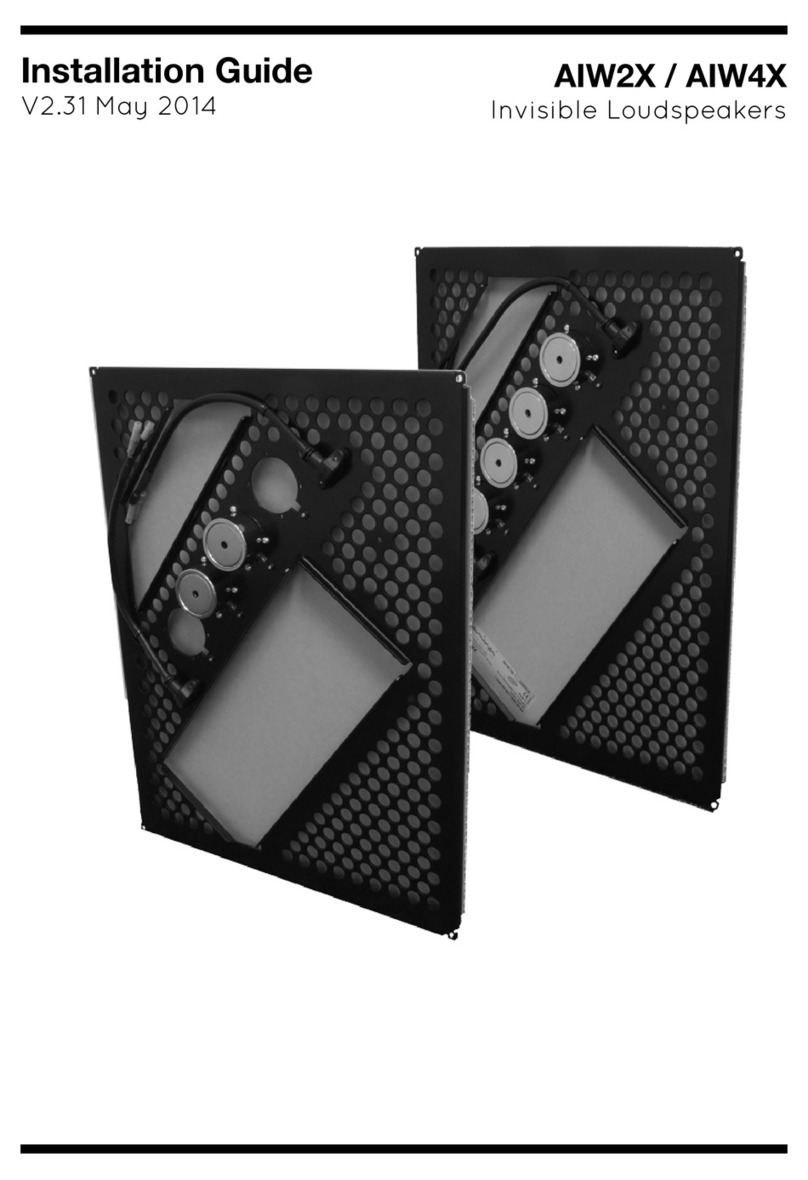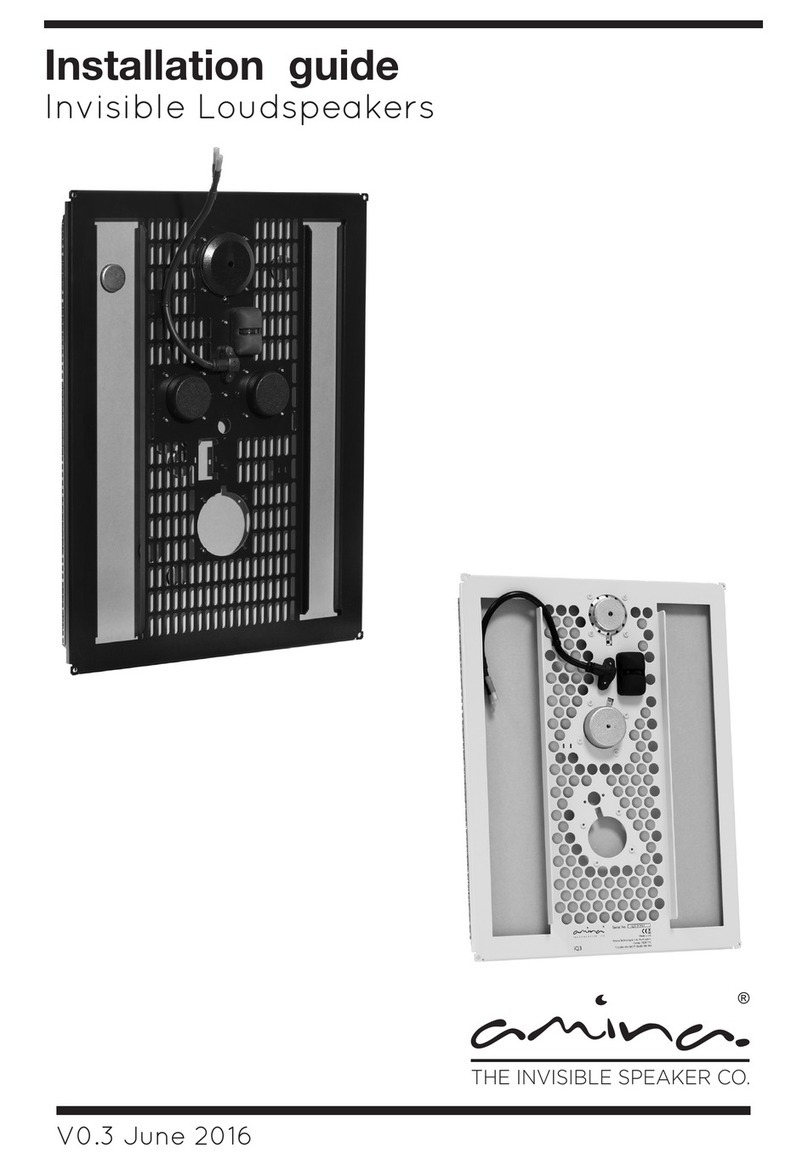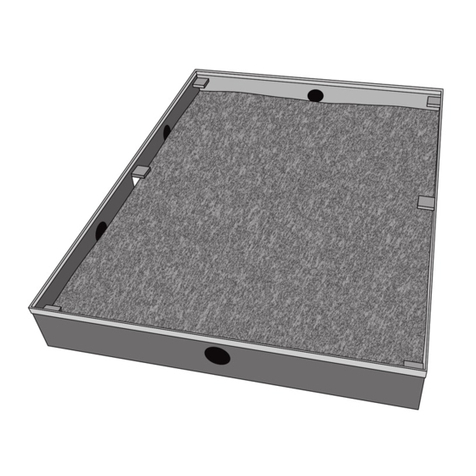Cavity installation
05
Locate joist work
When you have chosen your speaker
locations, before cutting a hole in the
plasterboard it is important that you locate
the position of the wall studs. Ensure the
spacing between them is at least 350mm
(133/4”) for a portrait orientated speaker.
01
Create 455 x 350mm aperture
Using a sharp knife or pad saw, cut an
aperture with dimensions 455mm x 350mm
(18” x 14”) in your plasterboard wall or ceiling.
Ensure aperture is created between
supporting joists or stud work.
We strongly advise that joists are not cut to
make space for the backbox. Any activity of
this sort may well influence the structural
integrity of your property.
Important: Double check the size of the
aperture is 455mm x 350mm (18” x 14”) as
this is important further on into the
installation process.
02
02
Typically a new build or full refurbishment.
Uses fixing blocks (sold seperately)
Reference pages for correct retrofit alignment and plastering method: 14 + 15
Reference page for correct new build alignment and plastering method: 16
Reference pages for correct drywall alignment and plastering method: 20 + 2 1
sharp knife
pad saw
350mm
(minimum)
cut a small
hole in plasterboard
to check stud location
01
Preparing the wall/ceiling and fixing the product
SPACESAVER:
The supplied Spacesaver may be used to
show the position of the speaker pre-install
by securing it to the wall.
Secure the speaker cable to the Spacesaver
before any building electrical inspection.
See page 30 for full details.

